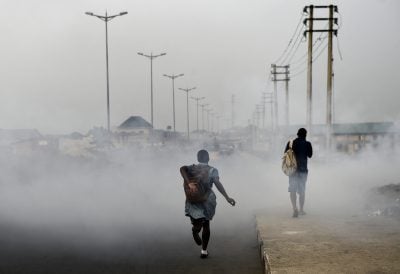“With fibre-optic networks you’ve got thousands of kilometres of fibre optic and something can go wrong at any point along that and for a whole host of reasons.
“So it very quickly became apparent to us that in order to provide the kind of level of service that we want to provide, which is akin to what you would find in the most developed countries, we needed to provide several levels of redundancy; not one but multiple levels. There are areas of our network where there are literally eight levels of redundancy.”
It was becoming clear to me that in the world of fibre optics, ‘redundancy’ meant building in plans B, C, D and so on in case something went wrong. So what form did this ‘redundancy’ take, I wanted to know.
“It means diverse, multiple fibre-optic routes, I mean diversity of equipment, I mean ring topology ensuring that we’ve got traffic being carried simultaneously on multiple fibres so that if one goes down, the customer doesn’t even notice that something has happened.”
He told me that they had gone beyond ‘self-healing rings’ and were now implementing simultaneous primary and secondary routing resulting in uninterrupted service should one of the transmission paths fail. The level of service and the resilience of the network across Southern Africa was such that “we haven’t had a service-affecting outage on our core network for close to three years now. That’s not to say that faults haven’t occurred or fibres haven’t been cut – they have been, on many occasions – but the end user has never experienced an outage as a consequence of these events.” I wish I could say the same for my internet provider in the UK. Nevertheless, I had to ask him if one needed greater redundancy in Africa than you would, say, in a developed country.
“I’d say the answer is yes. This is simply because of the number of reasons that faults, such as fibre cuts, occur in the network, combined with the vast distances involved. And the fact that fibre networks are vulnerable due to the complete lack of regulation and controls for their protection.”
What causes breaks in the fibre-optic cables, I wanted to know.
“I could write you a book,” he says with a quiet smile. “Its title would be 1,001 ways to break a fibre. The most common is just someone else digging for something and damaging the fibre. Deliberate vandalism is another; trees being uprooted in storms is a third.
“We’ve had bridges, which carry our fibre over a river, being washed away. Probably the more unusual cause – but it has happened – is elephants digging up the fibre, pulling it up and breaking it. So as I said, there are at least 1,001 reasons as to why fibres break.”
Then he recollected something else. “Rats,” he said, “are another problem. We have these big rats in Africa, they burrow down and for some reason they have taken a liking to the duct around the cable and they chew away at the duct. Now, our ducts which are especially made for us, have a special rat repellent in the duct that makes it not taste so nice – just to stop the rats.”
Gumption of different order
I began to understand the need for redundancy. Elsewhere in the world, once the cables have been safely laid underground, you can expect them to remain unmolested for a considerable period. Not so in Africa. You have to take into account accidental and deliberate damage and fend off the wildlife that seems to have taken a liking for the cables. Add to that tropical downpours, landslides, baking heat, floods and droughts. This is not an undertaking for the faint-hearted.
But even rolling out the cables over vast spaces and across different geographies and environments is an adventure in itself and calls for gumption of a very different order.
Want to continue reading? Subscribe today.
You've read all your free articles for this month! Subscribe now to enjoy full access to our content.
Digital Monthly
£8.00 / month
Receive full unlimited access to our articles, opinions, podcasts and more.
Digital Yearly
£70.00 / year
Our best value offer - save £26 and gain access to all of our digital content for an entire year!
 Sign in with Google
Sign in with Google 


